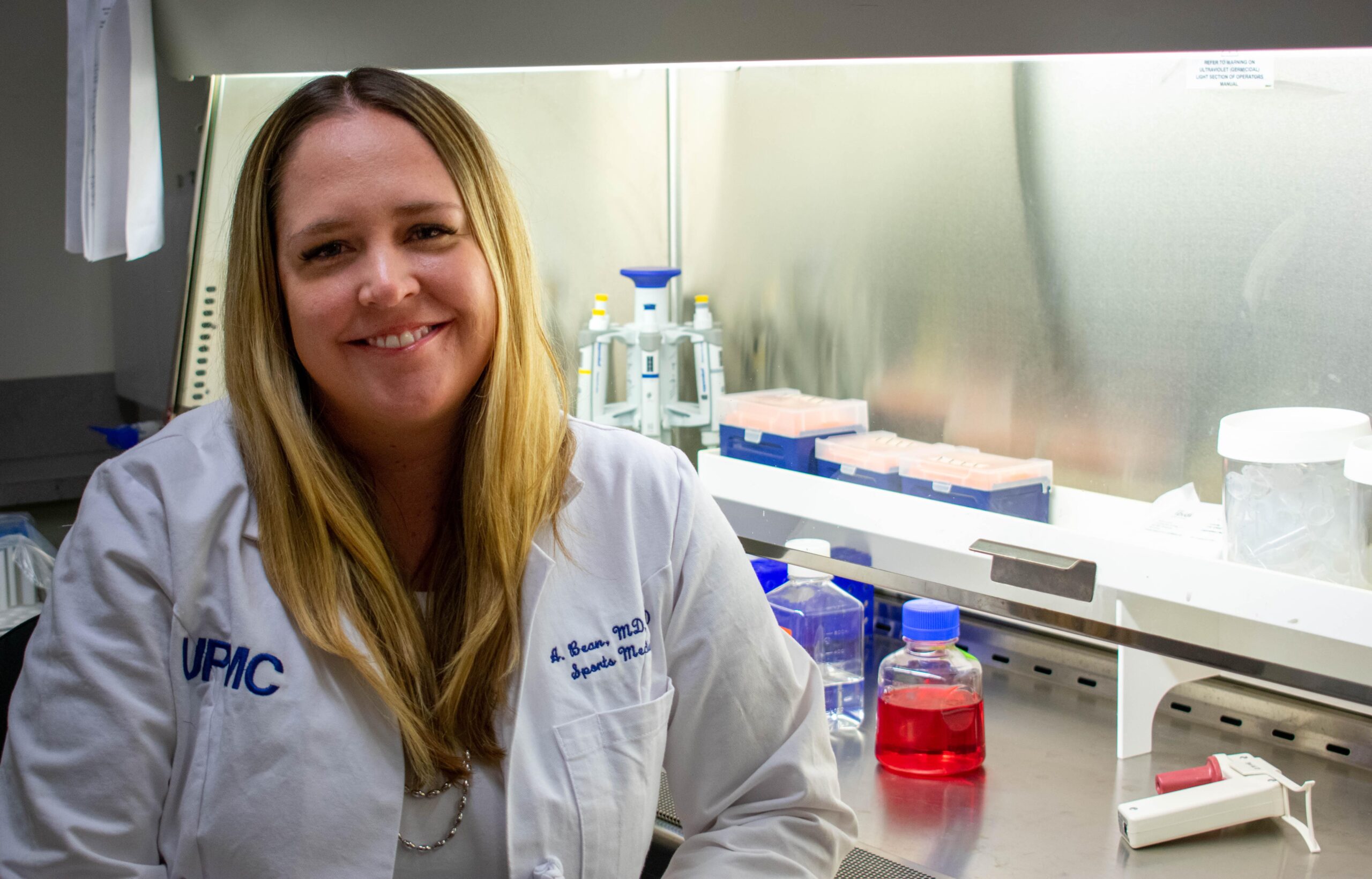Can you share a bit about your early life and what sparked your interest in research, medicine and orthopaedics/bioengineering?
When I was in high school, my parents (both civil engineers) told me about the recently established field of biomedical engineering or bioengineering. They showed me news articles about researchers creating devices that would enable people to control their prostheses with their minds, and I thought that being able to use engineering principles to create something that helped people and improved their health was exciting. Though I did not end up pursuing neural prosthetics research, I work as a physical medicine and rehabilitation (PM&R) physician (AKA physiatrist) with subspecialty training in sports medicine and musculoskeletal researcher, and the foundation of my work is still built on finding creative new ways to improve physical function and quality of life.
What were some pivotal moments or influences during your education that shaped your research interests?
I have been fortunate to have several outstanding mentors over the years who have played a central role in shaping my academic development as well as my research interests. My passion for musculoskeletal research was cemented when I started working with Dr. Kyriacos Athanasiou in his laboratory after my sophomore year at Rice University. It was a very positive and productive environment, and I received terrific mentorship from both Dr. Athanasiou and his graduate students. I had a similar level of support during my PhD at Pitt working with Dr. Rocky Tuan. The single person who has had the greatest influence on my career is my mentor and chair, Dr. Gwen Sowa. She was the first PM&R doctor I shadowed and has been an incredible role model over the last 10+ years, consistently demonstrating what it looks like to be an outstanding physician, scientist, leader, and mentor.
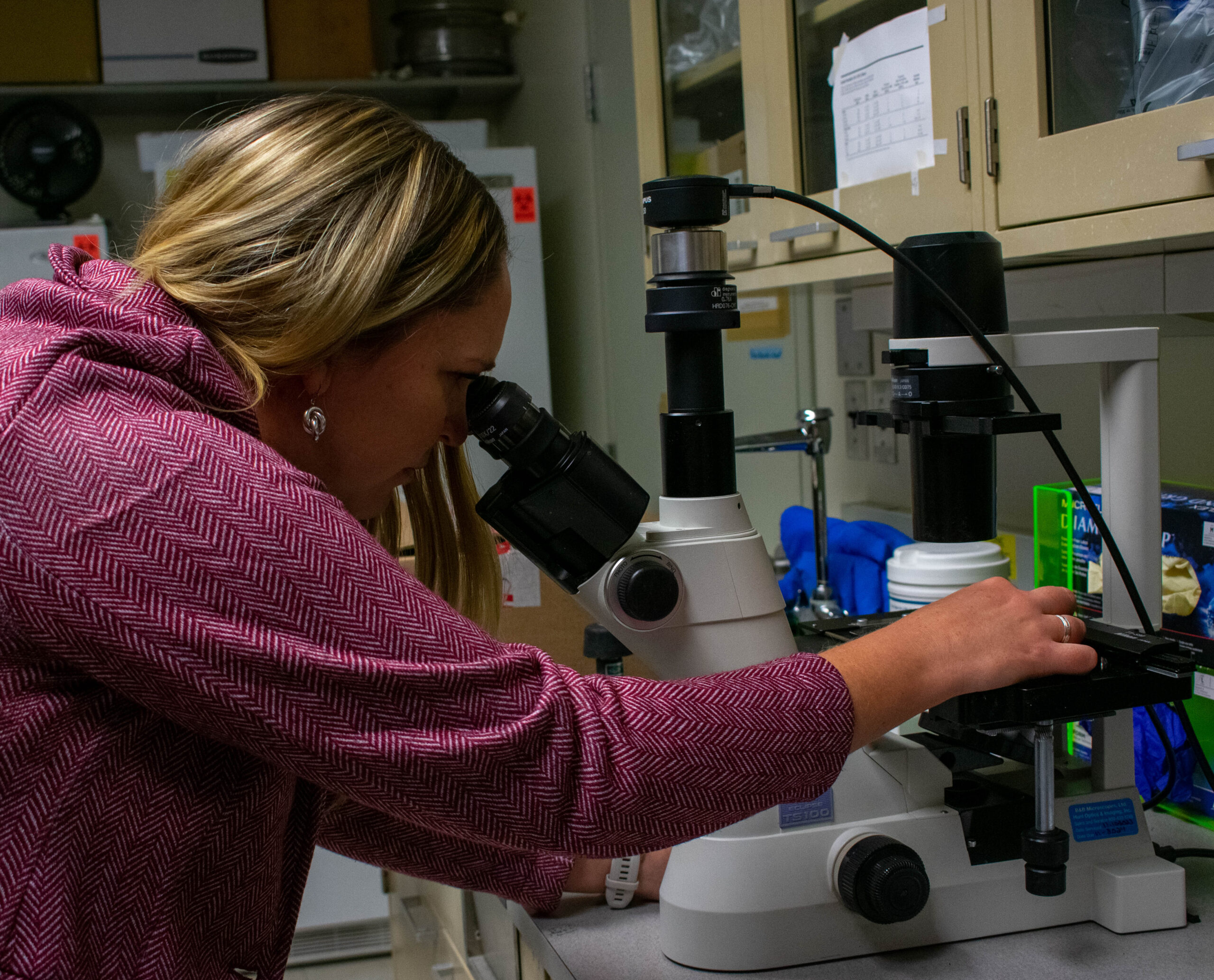
What were your initial career goals when you started your journey in research, and how have they evolved over time?
When I started my undergraduate studies, I had a vague plan to go to medical school, but I also very much wanted to continue to utilize my skills as an engineer. I wasn’t sure how I could make that happen until I met several MD/PhD students working in Dr. Athanasiou’s lab. Once I decided on the dual degree pathway, I didn’t look back. With the support of amazing mentors along the way, I have now successfully achieved my goal of becoming a physician-scientist, both seeing patients and running a translational research laboratory.
While my undergraduate and graduate research focused primarily on engineering new cartilage tissue in the laboratory that could then be surgically implanted, my interests have shifted slightly due to my experiences as a clinician. Many of my patients do not want to or cannot undergo a large surgery. Developing minimally invasive treatments — using a combination of ultrasound-guided injections and rehabilitation — to promote tissue regeneration and improve pain could help the lives of so many people living with chronic musculoskeletal conditions.
Are there specific achievements or milestones you aspire to reach in your career?
To me, the pinnacle of achievement would be to play a key role in the development and successful clinical translation of a new therapeutic strategy for chronic musculoskeletal disease that is definitively more effective that current treatments. Beyond that, I hope to be a successful mentor that influences the next generation of scientists and physician-scientists to achieve even greater things in the future.
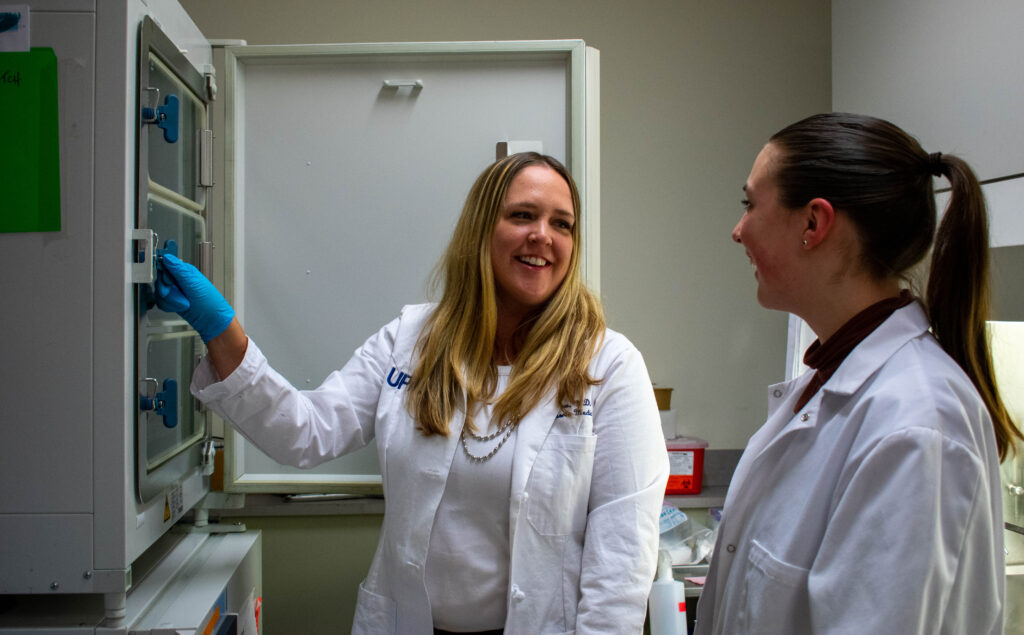
Could you provide an overview of your current role at the BMRC and responsibilities in your research position?
I am excited to join the BMRC as a core faculty member and work with other researchers in the Departments of Orthopaedics, PM&R, and beyond, to advance musculoskeletal research. In addition to continuing my role as a physician and growing my own research program, I will assist with organizing research and funding opportunities for trainees from the undergraduate to post-doctoral level supported by the BMRC.
What projects are you currently working on, and what excites you most about them?
The overall goal of my research program is to apply knowledge of biological mechanisms to develop individualized approaches to treat chronic musculoskeletal disorders combining injectable biologic treatments and rehabilitation strategies. Right now, most physicians treat diseases like tendinopathy and osteoarthritis using a one-size-fits-all and/or trial and error approach. Once we understand how individual factors such as age, sex, severity of disease, medical conditions, etc., influence response to treatment, we can then develop a therapeutic plan tailored to each individual.
Currently, my research is mainly focused on understanding how age, sex, and exercise affect tissue injury and healing, and the potential of extracellular vesicles (EVs) to promote regeneration. EVs are tiny particles released by cells that deliver messages to other cells and tissues to affect their structure and function. By understanding which components of EVs either help or impair healing for different individuals, we can then select for or engineer “good” EVs based on an individual’s biological state. Additionally, by understanding how physical activity affects EVs, we can learn more about which types of rehabilitation programs are likely to be most effective, either alone or in combination with other treatments.
Research can be demanding. How do you maintain a balance between your professional and personal life?
I am not sure a true balance is possible in a busy academic career. However, I have found that scheduling things in advance with friends, family, or even alone helps keep me more focused and efficient with my work. I enjoy cycling, hiking, and running—all of which I can do right from my house near Frick Park. Ease of access is very essential when trying to incorporate non-work activities into a busy schedule. I also have season tickets for Pitt football and basketball, as well as for the Steelers. Obviously, a lot of my non-work time revolves around athletics. I also purposely try to schedule vacations after big deadlines like grants or major presentations, so I have several days to unwind and can get back into the lab/clinic feeling refreshed.
Are there skills or qualities you believe are essential for success in the field of research?
A true love of learning and resilience in the face of the unexpected. Many experiments do not go to plan. It is essential to develop an appreciation for the scientific process, accept that mistakes are part of learning, and understand that null results or those counter to your original hypothesis are also important.
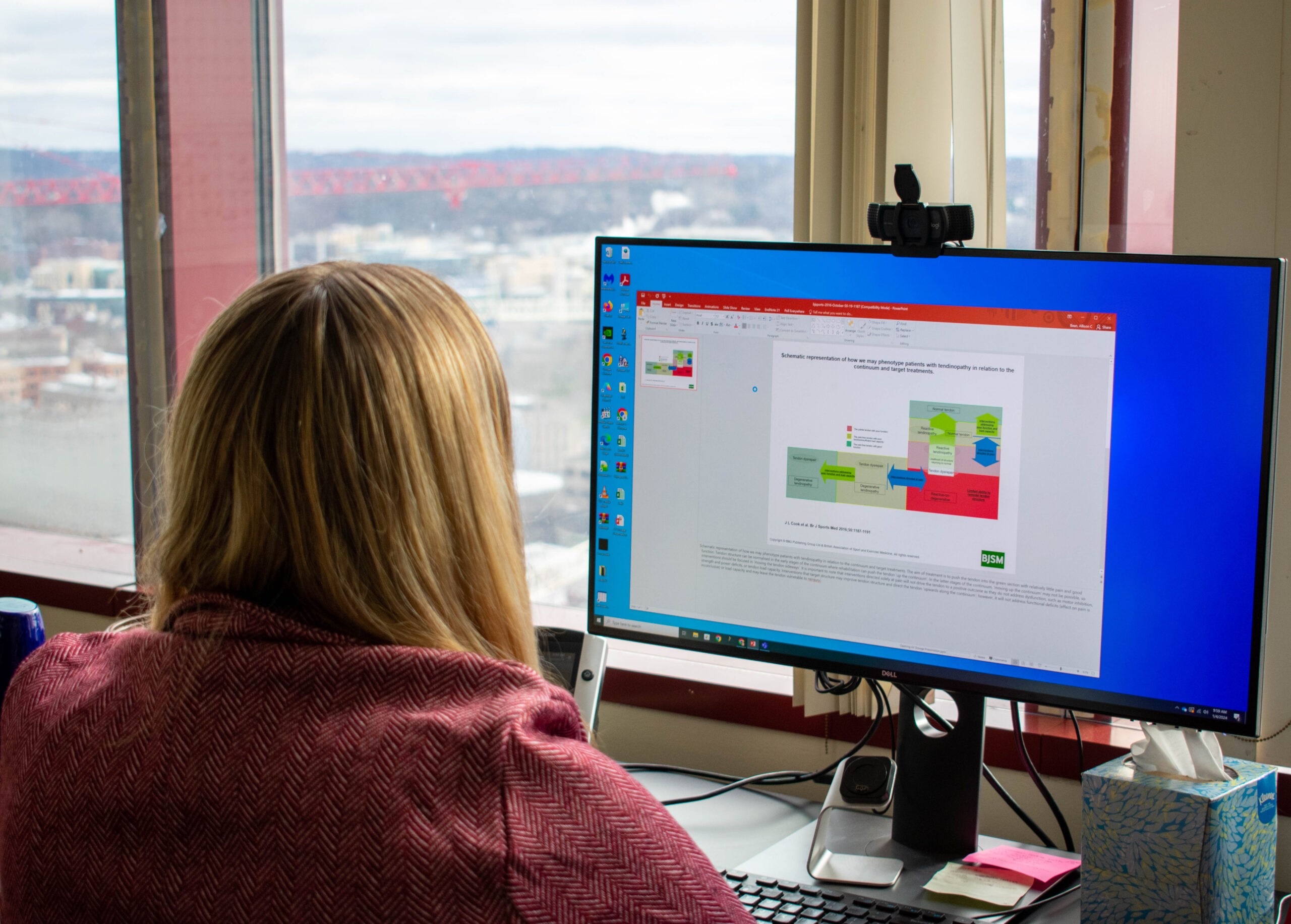
Are there any recent developments or breakthroughs in your field that particularly fascinate you?
The rapid rise of multiomics and ability to examine extremely complex biological processes at the level of a single cell or extracellular vesicle is extremely exciting. In the past, biology and tissue engineering research was limited to investigating how a treatment might affect a few key genes or proteins thought to be important to tissue healing. However, with the ability to perform large omics analyses we can get a much more detailed picture of the effects of treatments on cells and tissues. This will not only help us to screen potential therapeutics to determine which are most effective, but also help us to further understand the biological mechanisms underlying tissue disease and regeneration.
Are there specific areas within your field that you are interested in exploring further in the coming years?
Currently, there is little evidence for the optimal timing, intensity, and type of rehabilitation exercise after minimally invasive procedures such as injection of steroids or increasingly popular orthobiologics such as platelet-rich plasma. With growing collaborations in the BMRC, as well as other departments at Pitt and CMU, I hope to begin working on translational human studies to further understand the cellular and tissue level effects of combining injection-based treatment and mechanical loading to optimize tissue healing and regeneration.
